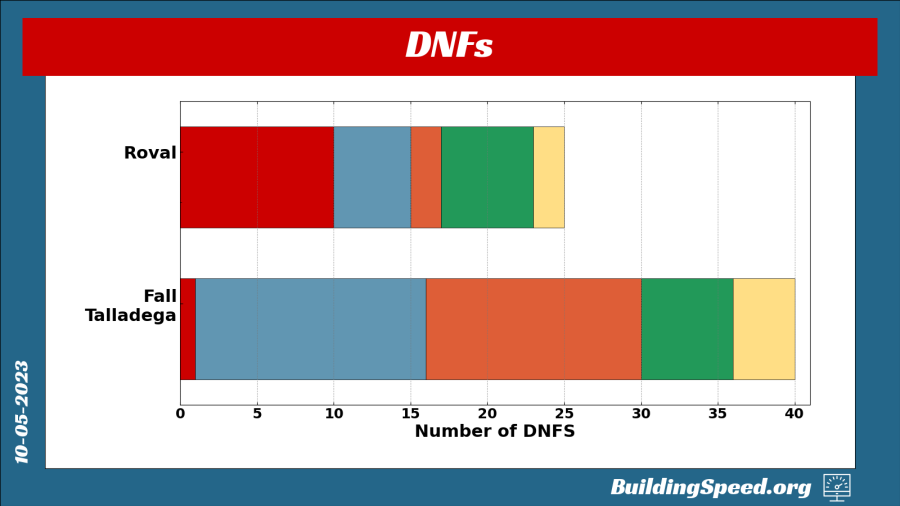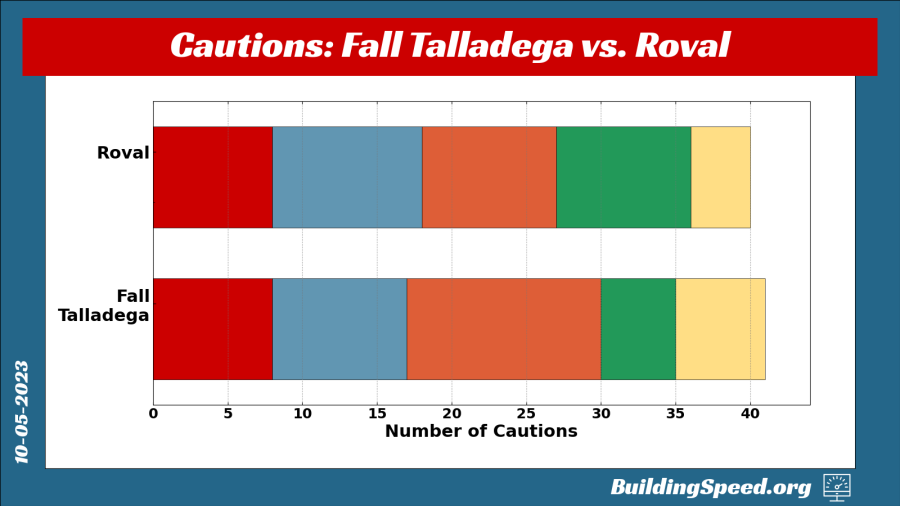Dr. Diandra: The Roval might be more of a playoff wild card than Talladega
Highlights: Charlotte ROVAL Cup Series qualifying
Watch highlights of NASCAR Cup Series qualifying for the Bank of America ROVAL 400 at Charlotte, the final race of the Round of 12.
While many consider Talladega the ultimate playoff wild card track, the numbers suggest that Charlotte's Roval may be just as formidable a challenge to the 10 drivers yet to secure places in the Round of 8.
Talladega is a track where a driver can do everything right and still end up finishing poorly. Between 17 left-and-right turns plus restart chaos, the Roval could dash drivers' playoff hopes this weekend.
The last two road course races (at Indianapolis and Watkins Glen) each had just one caution after NASCAR eliminated stage-break cautions. In both cases, a driver built a lead large enough that other drivers couldn't chase them down. As a result, NASCAR re-instituted stage-break cautions for the Roval.
NASCAR also moved the restart zone to minimize Turn-1 chaos. The restart zone is now in the exit of the frontstretch chicane. Unfortunately, the lack of restarts at the last two road course races doesn’t provide much data by which to predict whether moving the restart zone will help.
Talladega versus the Charlotte Roval
Sunday’s race (2 p.m. ET on NBC) will be the sixth on Charlotte’s 2.32-mile road course. At 252.88 miles, the fall Talladega race is roughly twice as long as the Roval.
I’ll be comparing data from 2018-22, so I need to account for the rain-shortened 2021 Talladega race. I’ll be comparing 2,332 miles of Talladega to 1,251 miles of Roval. The Roval is 53.6% of the superspeedway distance.
The graph below compares the numbers of cars that didn’t finish races at the Roval and Talladega. The different colors separate the five years compared: red for 2018, blue for 2019 and so on.

The Roval claims 25 DNFs over five years There were 40 non-finishers at the fall Talladega race over the same time period.
If NASCAR had run the same distance on the Roval as at Talladega, there would have been 46 or 47 DNFs over those five years — more than were recorded at Talladega. As much as drivers talk about the race being out of their hands at Talladega, mile for mile a driver is more likely to fall out of a race at the Roval than at Talladega.
The reasons for DNFs, however, are quite different. At Talladega, 92.5% of DNFs were caused by crashes. Accidents only make up 60% of the DNFs at the Roval over the last five years.
Talladega is tough on drivers’ nerves. The Roval is tough on their cars, too. Daniel Suárez’s power steering failed in last year’s elimination race at the Roval. That mechanical issue ended his playoff run.
Cautions
The graph below compares the number of cautions at each track from 2017-22.

Despite running only slightly more than half the miles of Talladega races, the Roval had only one less caution over the last five years. Each caution means another restart. At Talladega, drivers take a full lap to come to speed. At the Roval, they’ve demonstrated no reluctance to plow into Turn 1 with seemingly little regard for the other cars.
The hybrid Roval has the usual road course hazards, but it also offers plenty of wall area. At last year’s race, Kyle Larson made contact on the oval part of the track and broke his car’s suspension. Larson finished the race two laps down. He came into the Roval in fifth place in the points and left eliminated from the playoffs.
Larson appears to have done the same in Saturday's practice and will start from the rear of the field in a backup car.
Caution numbers don’t reflect contact at road courses that causes drivers to lose positions without drawing a caution. In 2021, Tyler Reddick bumped William Byron, causing Byron to miss a chicane. Byron fell from second to 12th.
If a driver can avoid elimination, he has a slight advantage at the Roval in terms of where he finishes. The Roval has never been won from the front row, but drivers starting in the top five finished in the top five 24% of the time. The percentage is 20% for the fall Talladega race.
The danger of averages
All of these numbers, however, are averages. Rodney Childers, crew chief for Kevin Harvick, isn’t so worried about Harvick finishing the race.
He compares Harvick with “a rookie that is fresh into the series and maybe overdrives the car all the time, where Kevin, you know, drives it safe all the time.”
Over 821 races, Harvick has 48 DNFs, for a 5.84% total DNF rate. Out of those, 31 (3.78%) were due to accidents rather than mechanical failures. That’s the lowest rate of any full-time 2023 driver. The next lowest rate is Denny Hamlin with a 7.91% overall DNF percentage and a 5.27% accident retirement. So the numbers I cited may not apply as much to Harvick in his last Roval race before retiring.
Next year, however, Childers will crew chief Josh Berry’s first full Cup Series season. He expects to worry a little more about the Roval with his new driver.
“Josh grew up like me,” Childers said, “running a lot of short track stuff. So you know, I think running the road courses has been a little bit of a challenge for him just like some other short trackers.”
Another reminder that, while averages tell a story, very few drivers are average.

